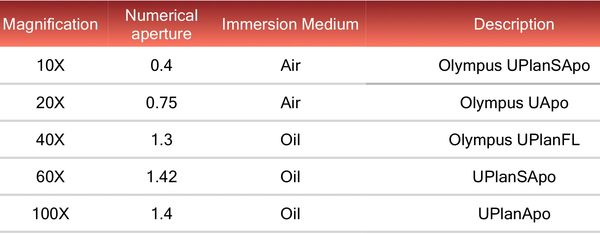Signed in as:
filler@godaddy.com
Signed in as:
filler@godaddy.com

In Micron we have two spinning-disk Ultraview confocal microscopes from PerkinElmer, located in room 00-030 in the basement of New Biochemistry.
A spinning disk confocal microscope provides optical sectioning while still permitting rapid imaging, on the order of 20 frames/s. It is therefore particularly useful for live cell imaging as the high imaging speed and low background provide crisp images even for fast moving objects in live cells.
The UltraView system is mounted on an IX81 Olympus inverted microscope with environmental chamber for temperature and CO2 control. It is equipped with an electron-multiplying charge-coupled device camera (EM-CCD Hamamatsu Photonics) and it has 6 laser lines, 405, 440, 488, 514, 561 and 640 nm. This allows a very wide range of fluorescent probes to be used on the system. The system is run by Volocity software.
The instrument is also fitted with a photo-bleach/activation unit, which can be used to provide either single spots or arbitrary shapes via line or raster scans, suitable for FRAP, photodamage and photoactivation experiments. The automated XYZ stage can be programmed for image stitching of large samples and time-lapse imaging at multiple positions.
For more information regarding training and booking please contact micron@bioch.ox.ac.uk.

